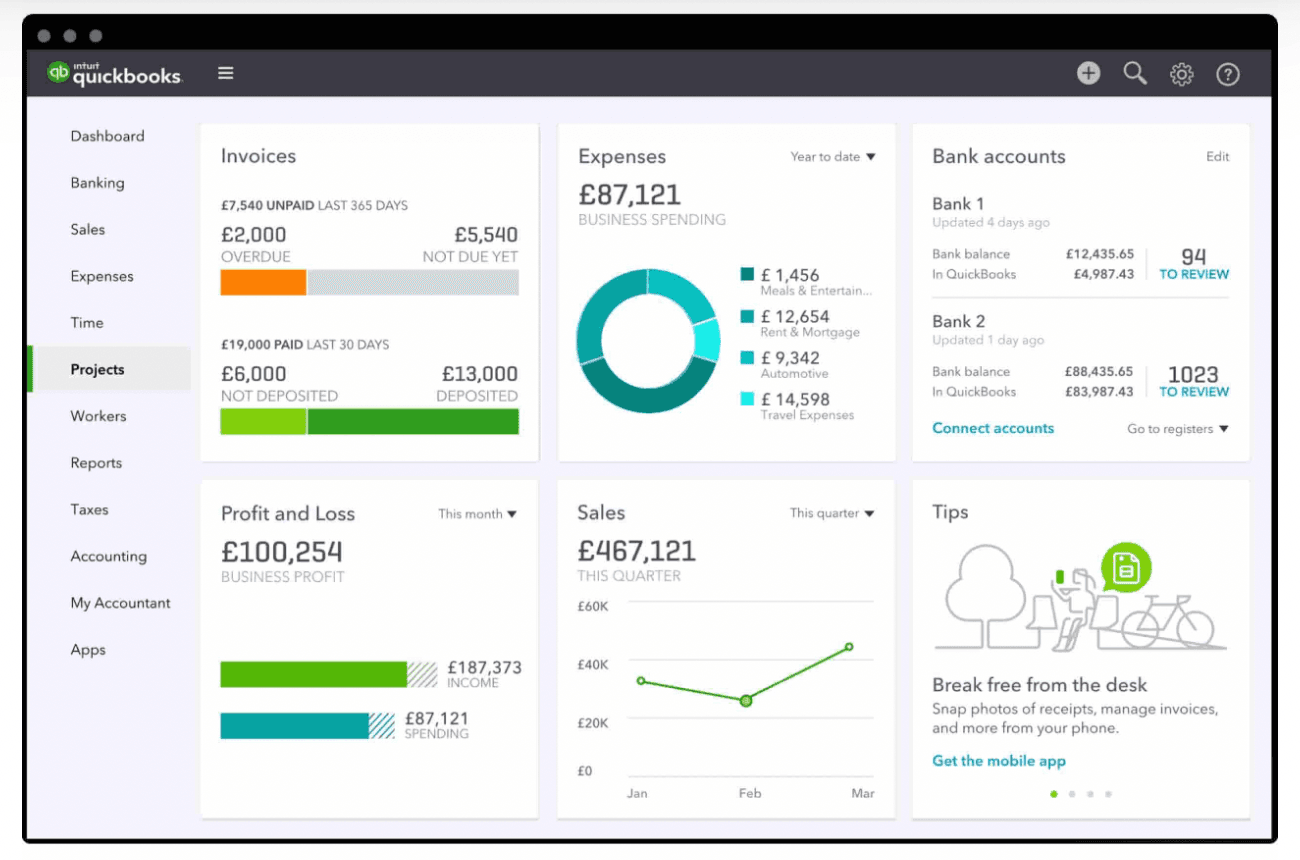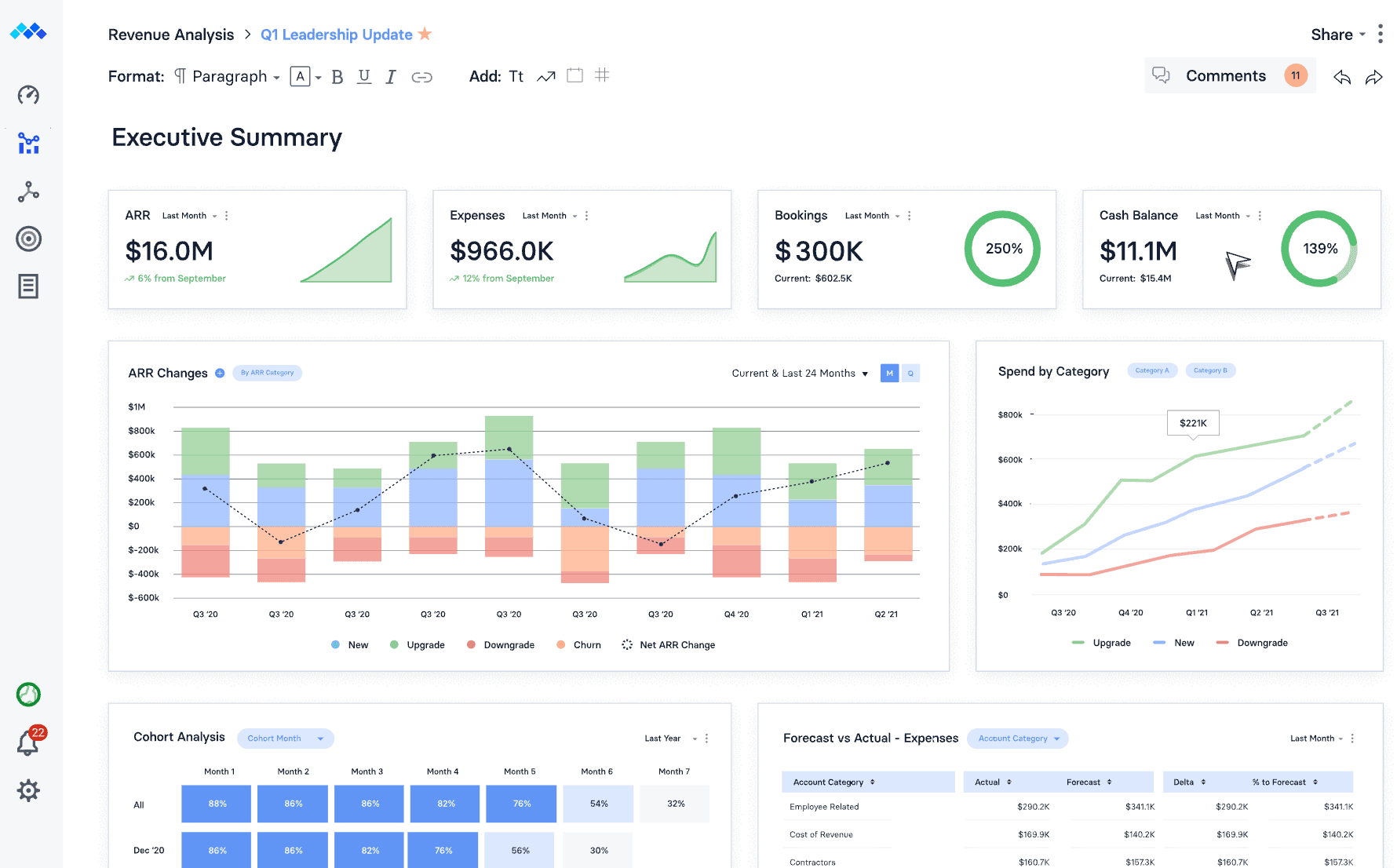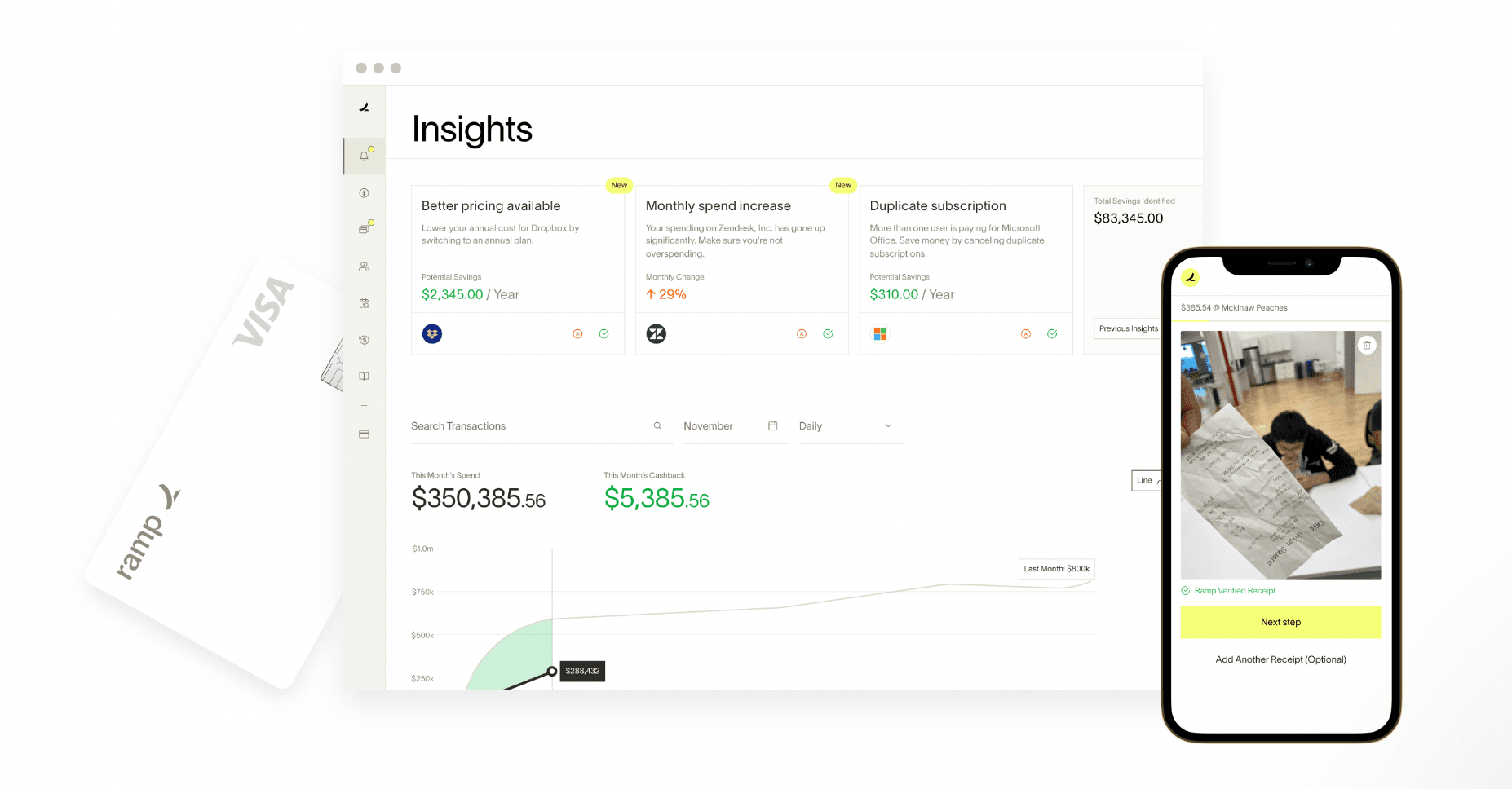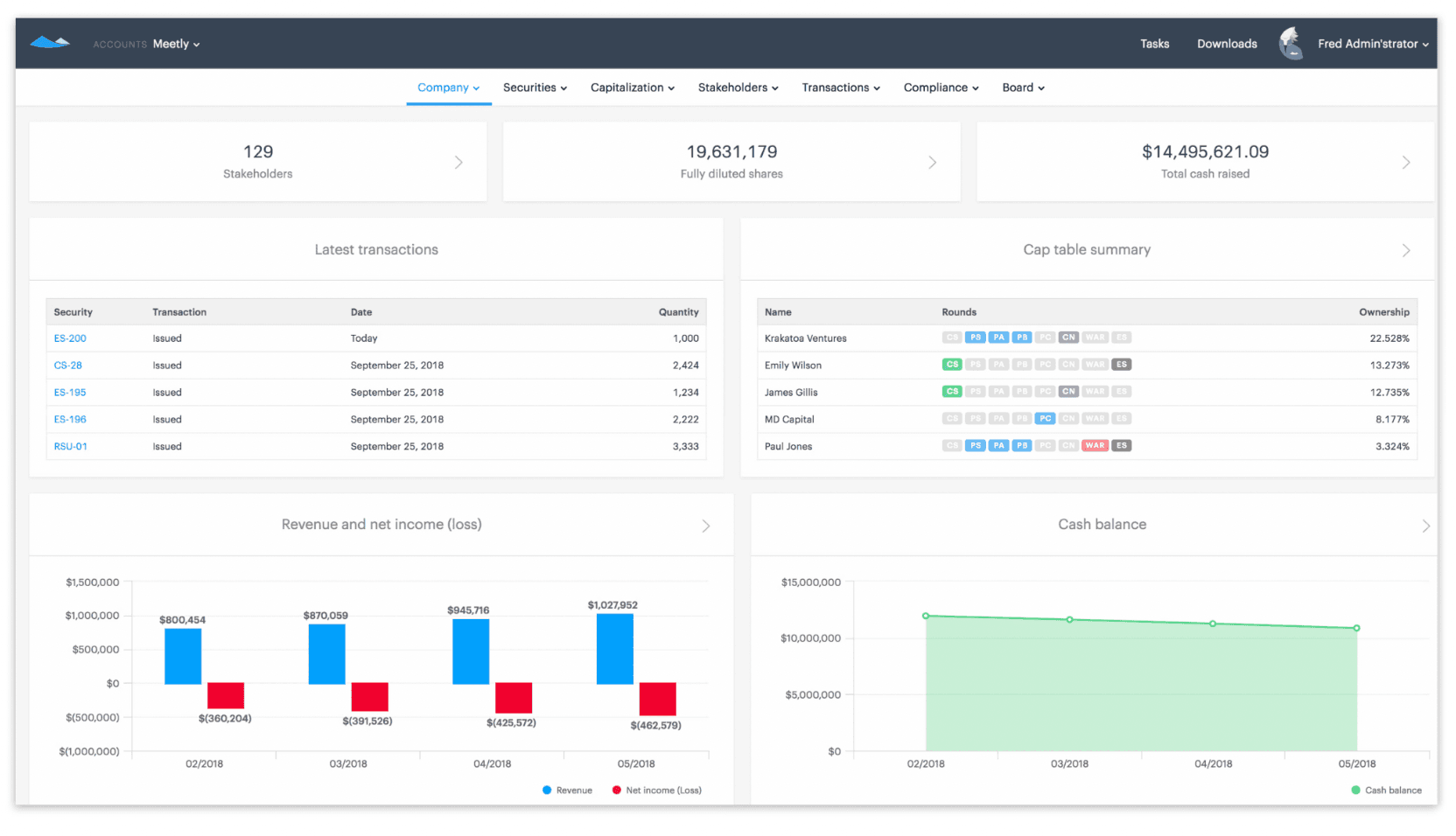Departments like marketing, sales, and engineering have seen major advancements in the technology they use every day — but finance has lagged behind, stuck with their legacy tools. The biggest thing to happen to finance tech in the last 20 years is the rise of Google Sheets. And while that was an important development, moving Excel to the cloud is far from the tech revolution finance needs and deserves.
On an episode of The Role Forward, Graham Stanton, a Co-Founder of Peloton and Founder of accounting and bookkeeping software Avise, expressed his frustration with ERP systems. “It was tough to keep track of everything, both from the standpoint of getting the books done to actually understanding the business,” said Stanton. “We had to do a lot of custom work to get the data. And then any analysis, the granularity wasn’t in the system, so we needed to use other platforms anyway.”
The modern CFO and FP&A teams need a toolkit that helps them earn a strategic seat at the table — one that eliminates the hassles of data wrangling and manipulation that Stanton dealt with so they can focus on growth initiatives. Discover what it takes to build the modern CFO software stack that transforms data from ordinary to extraordinary insights.
Table of Contents
What Is the CFO Software Stack?
The CFO software stack is the toolkit of systems of record and point solutions that help finance teams carry out their day-to-day responsibilities.
As former NetSuite CFO Ron Gill has explained, the CFO software stack has undergone a cycle of bundling and unbundling as tools and workflows move from centralization to decentralization. But no matter which era of finance tech you’re talking about, the same problem remains — finance has to handle massive volumes of data from all corners of the business, all spread across disconnected systems.
That’s why the core of any effective CFO software stack is a connected infrastructure of critical systems of record. The four main source systems are:
- ERP. Your core accounting system (Xero, NetSuite, QuickBooks, etc.) has long been considered the epicenter of finance information. Vendors long promised to be the unifying factor in the CFO software stack. But, as Stanton expressed, ERP reporting lacks the granularity CFOs need to uncover strategic insights. This leaves teams to find workarounds to pull data from other systems of record.
- CRM. Typically classified as a sales tool, it’s critical for CFOs to embrace ownership of the CRM setup. Your Salesforce or HubSpot instance houses all the crucial customer data necessary to truly understand your company’s top line.
- HRIS. Human resource information systems like Gusto and BambooHR store all of the employee information that you need for effective headcount planning and department-level analysis. Connecting these systems to the CFO software stack helps you observe hiring trends and employee turnover metrics, which will drive financial assumptions for your business plans.
- Billing systems. Cash is king for companies of all sizes. Systems like SaaSOptics and Chargebee help you maintain a clear view of cash inflows by streaming transaction-level data for your business. With visibility into this data, you get better insight into revenue recognition, accruals, and runway — and you also gain a stronger foundation for cash flow forecasting.
These core systems of record will give you the data foundation to carry out the basics of strategic finance. However, these are just the basic building blocks of a modern CFO software stack. Today, you can go much further to unlock strategic insights about your business.
How Strategic Finance Software Can Support CFOs & Finance Teams
Why You Should Modernize Your Finance Tech Stack
The role of the modern CFO breaks down into four identities: operator, executive, technologist, and adviser. The CFO needs a tech stack that empowers data-driven decision-making through each of these identities at any second.
Yet it could take hours, days, or even weeks to retrieve, reconcile, and follow up on the data and conversations between department leaders and finance. Are you able to answer strategic questions like these at a moment’s notice?
- How does our revenue stream impact headcount planning?
- When will we run out of cash?
- What does our debt look like?
- What equity can we offer new leadership candidates?
- What is the cost of system A over system B? Who utilizes it?
- Are we ramping up AEs fast enough to hit our revenue goals?
- What do our sales pipeline metrics look like by industry?
If you can’t answer these questions in a matter of minutes, there’s room for improvement in your tech stack.
When you combine time-saving tools and processes with an emphasis on the granularity and depth of the data, you get closer to spending more time with the data itself. It’s at that point where the strategy can be implemented sooner to have a more immediate impact on the company’s well-being.
Real-Time Data Provides Granular Visibility
ERPs provide a holistic view of data with no granularity. Historical data strewn across other systems provides information to create scenario analysis examples. But to even create these scenarios, finance needs granular details — and these details are constantly changing in real-time.
Stanton emphasized that, for any company, a “real-time view is critical. Any company that actually changes from month to month will not be satisfied to look at last month’s data (or two, if the month-end close takes longer).”
When the tech stack is capable of updating and syncing systems in real time, the time spent reconciling data is cut down. Finance is able to then dive into scenario analysis and model future growth with more accuracy.
Automation Speeds Up Legacy Processes
Traditional finance processes have relied on spreadsheets, which are susceptible to human error and force teams into long cycles of data collection and aggregation.
Finance automation allows teams to move away from the “grunt work” and need to learn a technical skill set to free time up for crafting the company narrative through models and reports.
Scalability Allows Data and Insight to Grow with the Business
Company growth requires growth in every department and system: There’s more external and internal data to track and assess. And tech stacks can be optimized with software that easily scales with the company.
Stanton noted that while Excel is great for smaller companies, it’s not great when companies experience hyper-growth. “It’s great for prototyping and one-time analysis,” said Stanton. “But anytime you have an overly complex Excel spreadsheet that’s being used over and over again, that’s a sign that this could have been better done in a tool.”
Stanton witnessed Excel crashing people’s computers to employees splicing data across multiple spreadsheets. These experiences leave finance to the whims of the process, with more time consumed trying to find, load, and reconcile the data. When a tech stack scales with a company, it pulls the data quickly. And with the benefits of automation and real-time visibility, a scalable tech stack empowers finance to conduct their best, most accurate work.
6 Essential CFO Software Tools
You’ve got your spreadsheets and core systems of record. You understand how real-time visibility, scalability, and automation help make finance more strategic. But to really get to these benefits, you need to figure out what to add to your CFO software tech stack that will unlock these advantages.
The list below notes categories and finance software that round out your tech stack to embrace the full financial picture required to create best-in-class strategies with the company’s best interest in mind.
1. Accounting Automation and Month-End Close Software
The month-end close process is notoriously time-consuming, taking anywhere from two to three weeks (according to 50% of surveyed companies). It’s ripe for automation, as it’s a structured process with repetitive steps, and can be streamlined with financial close software.
Cloud-based ERPs, like QuickBooks and NetSuite, have accounting automation software included to easily track “money in, money out” the moment transactions occur. FloQast also streamlines a range of workflows that would normally require manual data entry from your accounting team, like general ledger account reconciliation and accounts receivable and payable.

QuickBooks Project Dashboard (Image Source)
2. Business Intelligence
Business intelligence solutions pave the way for scalability, as they combine software, process automation, and sometimes artificial intelligence or machine learning to aggregate data from multiple sources. Looker and Tableau are popular options for visualizing and analyzing data that lives in data warehouses. They can handle any and all data analysis and visualization requests you need and typically sit on top of data warehouses like Amazon Redshift, Snowflake, or BigQuery.
The problem is that these platforms come with massive complexity and a need for highly-technical skill sets. For finance to leverage BI properly, they need a purpose-built financial business intelligence platform.
3. Financial Planning & Analysis (FP&A) and Strategic Finance Software
Having the data is one thing, but turning that data into actionable insights is where strategy and growth happen for your company. Finance teams live in FP&A software, where they can analyze the company’s overall financial health to forecast its future and craft reports to share with the CFO, who then shares this vital information with executive leadership.
Mosaic is a Strategic Finance Platform that automatically consolidates data from both core systems and multiple subsidiaries. It’s the connective tissue for all core systems of record that enables the modern finance function to spend less time collecting data and more time thinking strategically about the business.

4. Spend and Expense Management
In both large and small businesses, money is flowing out to cover expenses and operating costs on a near constant basis. Between spend approvals and expense reporting, finance has a field day chasing down information to ensure its accuracy (and that it’s filed by any deadline).
There are a few spend management tools that streamline spend and expense management:
- Spend platform Airbase allows users to implement levers of control for budget corrections, whether it’s across the entire company or for one department.
- Expensify empowers employees to scan receipts directly into the expense management system and aggregates reimbursement requests, resulting in a streamlined management process.
- Ramp is a spend platform that allows leadership to set spend limits on virtual and physical cards. Finance will be able to define approval workflows and work within the system to pay vendors or reimburse employees.

Ramp Spend Management Platform (Image Source)
5. Commission Management
Finance and sales teams could use Salesforce to calculate their commissions. But the lack of commission-specific features and the need for heavy customization make the process tedious and complex.
Spiff automates the commission process by syncing with your source, whether it’s an ERP or CRM. Spiff also offers real-time visibility and scalability: As contracts change and the sales team grows, accelerators and processes can be easily updated across the company.
6. Stock Administration
There’s an art and science to optimizing your SaaS valuation. The art side includes building a narrative around your business and ensuring employees are satisfied with stock compensation. But the science side is all about the dollars and cents of equity offerings.
As your company matures, you need an easy way to manage your cap table to ensure all of your shareholders can maximize returns.
Carta helps companies manage their equity, whether it’s through working through the valuation process or distributing equity contracts to employees.

Carta Equity Management Dashboard (Image Source)
The Right CFO Software Stack Helps You Tell the Why Behind Your Numbers
The CFO tech stack needs to capture a company’s financial health from every angle. But it’s not just about capturing data anymore. “The CFO’s job is to be able to interpret the data and tell that story,” said Stanton. “You can only tell a good story about how the business is doing based on the underlying data.”
The modern CFO tech stack empowers finance at every level to push toward deeper data, resulting in deeper insights and better strategy. Mosaic integrations create connective tissue for your core tech stack systems and subsidiaries to deliver real-time data visibility, streamline analysis, and enable continuous planning.
With Mosaic, you’re able to stay on top of your cash cycle, understand the impact of your hiring plans, nail your topline goals, and bring out-of-the-box metrics into the conversation for any forecast.
Request a personalized demo today, and discover how Mosaic amplifies your tech stack to the next volume of success.
CFO Software FAQs
What software does a CFO use?
Chief Financial Officers use a variety of software solutions in their tech stack, including enterprise resource planning systems (ERPs) and SaaS accounting software, customer relationship management (CRM) software, and human resource information systems. Because finance sits at the intersection of all business data, systems of record from multiple departments must be included in the finance tech stack.
Finance tools like Mosaic offer integrations with other CFO resources and software to consolidate financial data and allow for easy business performance analysis and forecasting.
Why is CFO software important?
Own the of your business.


